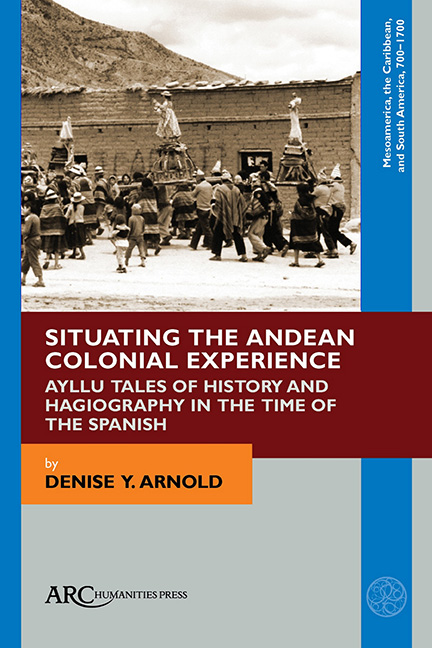 Situating the Andean Colonial Experience
Situating the Andean Colonial Experience Book contents
- Frontmatter
- Contents
- List of Illustrations
- Note About the Spelling of Toponyms and Proper Names
- Acknowledgements
- Maps
- Introduction
- PART ONE THE ORAL HISTORY OF QAQACHAKA
- PART TWO THE COLONIAL CACIQUES IN ORAL AND WRITTEN HISTORY
- PART THREE QAQACHAKA MARKA
- PART FOUR THE SAINTS APPEAR
- PART FIVE THE RELIGIOUS PRACTICES OF QAQACHAKA MARKA
- Some Conclusions
- Glossary
- Appendix A Document C of Don Franco Quispe Maraza
- Appendix B Document K of Don Franco Quispe Maraza
- Bibliography
- Thematic Index
- Index of Toponyms
Chapter 3 - The Mit’a, the Mines, and Slavery
Published online by Cambridge University Press: 22 June 2021
- Frontmatter
- Contents
- List of Illustrations
- Note About the Spelling of Toponyms and Proper Names
- Acknowledgements
- Maps
- Introduction
- PART ONE THE ORAL HISTORY OF QAQACHAKA
- PART TWO THE COLONIAL CACIQUES IN ORAL AND WRITTEN HISTORY
- PART THREE QAQACHAKA MARKA
- PART FOUR THE SAINTS APPEAR
- PART FIVE THE RELIGIOUS PRACTICES OF QAQACHAKA MARKA
- Some Conclusions
- Glossary
- Appendix A Document C of Don Franco Quispe Maraza
- Appendix B Document K of Don Franco Quispe Maraza
- Bibliography
- Thematic Index
- Index of Toponyms
Summary
… when some mita Captain goes off to Potosí, it's with the accompaniment of their Indians dressed for war, with their ancient arms and the gallant-ones with their feathers …
Ramírez del Águila ([1639] 1978, 131)… put to work, they carry it out with so much pleasure and laughing as if they were making festivities.
([1639] 1978, 116)FOR DON FRANCO, the change from the purchase of Qaqachaka as a hacienda towards its purchase as part of the composition of lands occurred when the ancestor Llanquepacha and his associates opted to work as mitayos in the mines of Potosí, to guarantee legally their usufruct to the annex lands. The importance of the regional mines, whether of Potosí, Porco, Colquechaca or Uncía, in Qaqachaka's history cannot be underestimated, as it forms the material basis of its existence as a fundamental part of its mythology.
The Vicuña with a Broken Leg
These mythical dimensions around the history of the mines emerge in another episode of Qaqachaka's oral history, in which Don Franco described the origins of the mines of Colquechaca and Uncía. In this episode, the mine of Uncía was discovered when a vicuña broke its leg, while carrying a heavy cargo of minerals from Colquechaca in the service of its owner, the Lord of the Mountains. Like many other comunarios of the place, Don Franco affirmed the functioning, in the world inside the mountains under the dominion of this Lord, of a system of relations in parallel with those of this world on the surface of the earth. There, the vicuña serves as the llama of this Lord, the deer as his goat, the vizcacha as his donkey, the rough woven sacks used to carry the minerals as his toads, and the ropes that tied the sacks to the backs of the vicuñas as his snakes.
In the tale, the broken leg of the vicuña anticipates this discovery of the new vein of minerals. It is as if these veins were the bone marrow of these animals, and besides, continuous channels of communication between the mountains and these beasts of burden. When the vicuña breaks his leg, this vein rises to the surface, to bestow its riches to those who work the mine.
- Type
- Chapter
- Information
- Situating the Andean Colonial ExperienceAyllu Tales of History and Hagiography in the Time of the Spanish, pp. 59 - 70Publisher: Amsterdam University PressPrint publication year: 2021


